Parakeet as pet – 12 Stunning Species Every Beginner Must Know
Choosing a parakeet as pet brings joy, companionship, and vibrant colors into your home. These remarkable birds, with their intelligence and social nature, have captivated bird enthusiasts worldwide for decades. Whether you’re contemplating your first avian companion or expanding your feathered family, understanding different parakeet species will help you make an informed decision about which parakeet as pet suits your lifestyle best.
The world of parakeets encompasses over 115 species, each possessing unique characteristics, temperaments, and care requirements. From the beloved budgerigar to exotic ring-necked varieties, selecting the right parakeet as pet requires careful consideration of factors like space, experience level, and personal preferences. This comprehensive guide explores twelve stunning parakeet species that make exceptional companions for beginners, providing essential insights into their distinctive traits and care needs.
Table of Contents
Understanding Parakeets: The Foundation of Successful Pet Ownership
What Defines a Parakeet?
Parakeets belong to the parrot family, characterized by their slender builds, long tapering tails, and seed-eating diet. These small to medium-sized birds exhibit remarkable intelligence, social behaviors, and adaptability that make them excellent choices for those considering a parakeet as pet. Their natural curiosity and playful disposition create engaging interactions with their human companions.
The term “parakeet” encompasses various species distributed across different continents, each adapted to specific environmental conditions. Understanding these fundamental characteristics helps prospective owners appreciate why keeping a parakeet as pet requires dedication, proper knowledge, and consistent care.
The Appeal of Parakeets as Companion Animals
The popularity of keeping a parakeet as pet stems from their manageable size, relatively straightforward care requirements, and entertaining personalities. Unlike larger parrot species, parakeets typically adapt well to domestic environments while maintaining their natural behaviors and vocalizations.
Their social nature makes them responsive to human interaction, often developing strong bonds with their owners. Many parakeet species demonstrate remarkable learning abilities, including mimicking sounds and simple words, which enhances the experience of having a parakeet as pet.
1- The Classic Budgerigar: Your Perfect First Parakeet as Pet
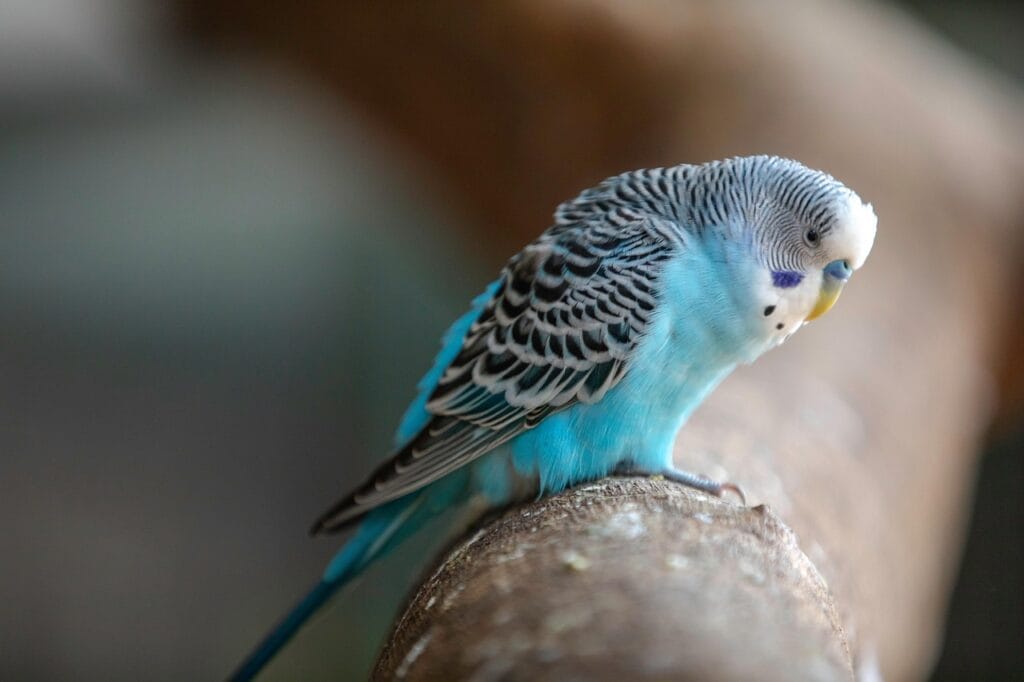
Origins and Natural Habitat
The budgerigar, commonly known as the budgie, represents the quintessential parakeet as pet choice for beginners. Native to Australia’s vast grasslands and woodlands, these resilient birds have adapted remarkably well to captivity while retaining their natural charm and intelligence.
Wild budgerigars exhibit nomadic behaviors, following seasonal food sources across Australia’s interior. This adaptability translates beautifully to domestic environments, making the budgerigar an ideal parakeet as pet for those new to bird ownership.
Physical Characteristics and Color Variations
Standard budgerigars display the classic green and yellow coloration with distinctive black markings across their wings and backs. However, selective breeding has produced numerous color mutations, including blue, white, yellow, and various pied patterns. These variations make choosing a budgerigar as your parakeet as pet an exciting decision with multiple aesthetic options.
Male budgerigars typically exhibit bright blue ceres (the area above their beaks), while females display brown or tan coloration in this region. Understanding these sexual differences helps owners make informed decisions when selecting their parakeet as pet.
Temperament and Social Needs
Budgerigars possess gentle, curious temperaments that make them excellent companions for beginners. Their social nature means they thrive with regular interaction, whether with human companions or other budgerigars. Many owners find that keeping a pair enhances their parakeet as pet experience, as the birds provide companionship for each other.
These intelligent birds demonstrate remarkable learning capabilities, often mimicking household sounds and simple words. Their playful nature and acrobatic abilities provide endless entertainment for their human families.
2- The Charismatic Monk Parakeet: A Bold Choice for Adventurous Beginners
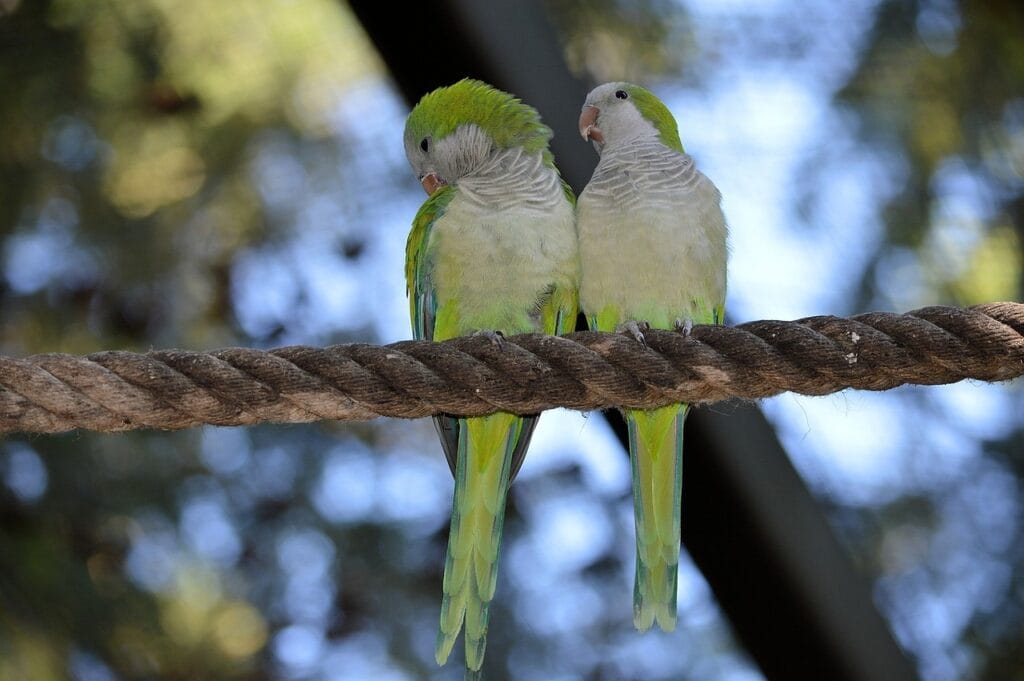
Distinctive Features and Appearance
Monk parakeets, also known as Quaker parrots, present a striking appearance with their bright green plumage contrasted by gray foreheads and chests. Their robust build and confident demeanor make them an impressive parakeet as pet option for those seeking a bird with substantial personality.
These medium-sized parakeets possess strong, curved beaks adapted for their varied diet in the wild. Their expressive eyes and alert posture reflect their high intelligence and social awareness.
Personality and Behavioral Traits
The monk parakeet’s bold personality sets them apart from other species. Known for their confidence and curiosity, these birds quickly establish themselves as family members when kept as a parakeet as pet. Their strong social bonds with owners often result in devoted, affectionate relationships.
However, their assertive nature requires consistent training and socialization from an early age. Prospective owners should understand that choosing a monk parakeet as pet involves commitment to ongoing behavioral guidance and mental stimulation.
Care Considerations and Housing Requirements
Monk parakeets require spacious enclosures due to their active nature and larger size compared to budgerigars. Their intelligent minds need constant stimulation through toys, puzzles, and interactive activities. When properly cared for, a monk parakeet as pet provides years of companionship and entertainment.
Their dietary needs include high-quality pellets, fresh vegetables, and occasional fruits. Understanding these nutritional requirements is crucial for maintaining a healthy monk parakeet as pet.
3-The Vibrant Sun Conure: Bringing Tropical Beauty Home
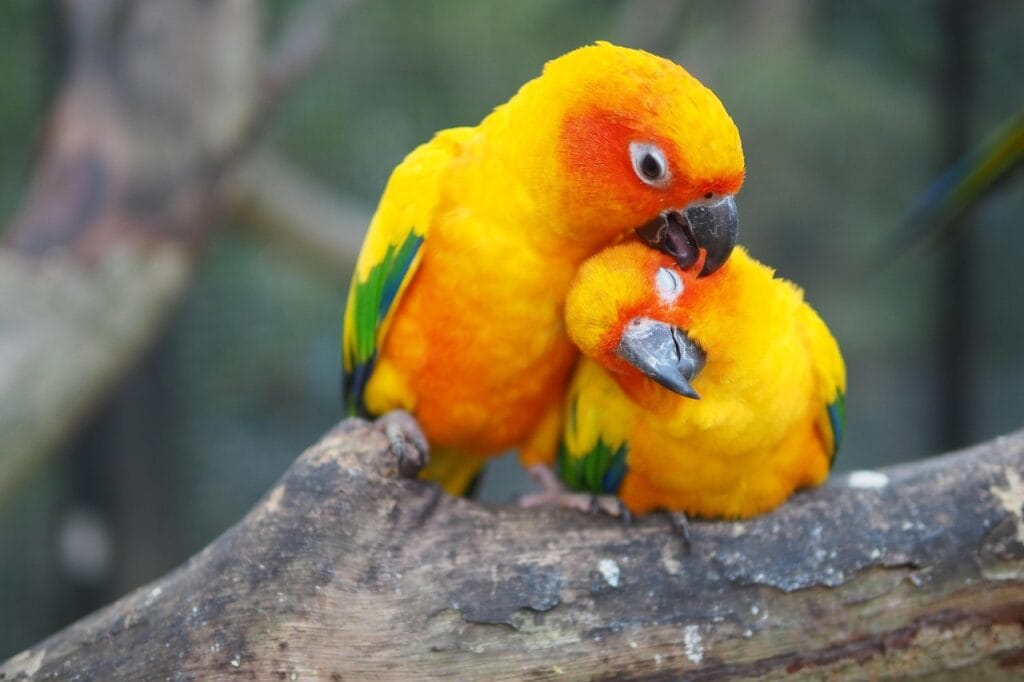
Stunning Visual Appeal
Sun conures captivate with their brilliant golden-yellow and orange plumage, accented by green flight feathers and subtle blue markings. Their radiant coloration makes them one of the most visually striking options when considering a parakeet as pet, though their beauty comes with specific care requirements.
These medium-sized birds possess robust builds and playful dispositions that translate into active, engaging pets. Their expressive faces and animated behaviors provide constant entertainment for their human companions.
Vocal Characteristics and Communication
Sun conures are notably vocal birds, expressing themselves through various calls, squawks, and learned sounds. While their vocalizations add personality to their role as a parakeet as pet, prospective owners should consider their noise levels, especially in apartment settings.
Their intelligence allows them to learn words and phrases, making communication with their human families rewarding and interactive. Many sun conure owners develop unique communication patterns with their parakeet as pet.
4-The Elegant Indian Ringneck: A Regal Addition to Your Family
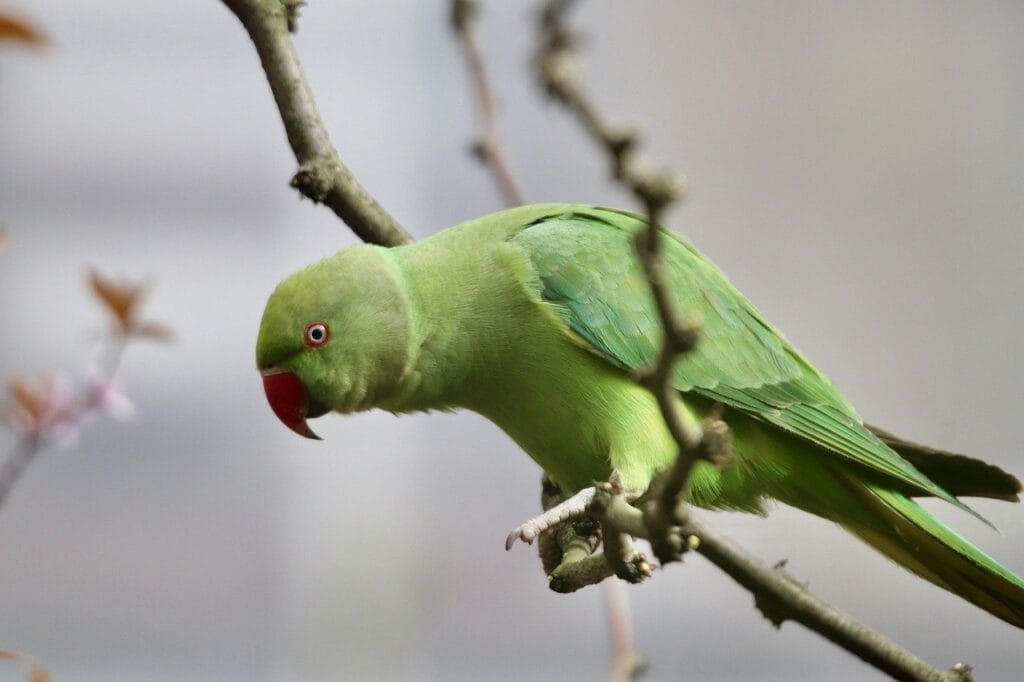
Historical Significance and Cultural Importance
Indian ringneck parakeets possess rich historical significance, having been kept as companion birds for over 3,000 years. Their association with royalty and spiritual traditions adds mystique to the experience of keeping an Indian ringneck as your parakeet as pet.
These graceful birds exhibit remarkable intelligence and speaking abilities that have made them prized companions throughout history. Their elegant appearance and dignified bearing reflect their noble heritage.
Physical Characteristics and Sexual Dimorphism
Indian ringnecks display vibrant green plumage with distinctive long, tapering tails that contribute to their elegant silhouette. Males develop the characteristic black and rose-colored neck ring around three years of age, while females typically remain without this marking.
Their medium size and graceful proportions make them visually appealing choices for those seeking an Indian ringneck as their parakeet as pet. Various color mutations, including blue, yellow, and lutino varieties, provide additional options for prospective owners.
Intelligence and Training Potential
Indian ringnecks rank among the most intelligent parakeet species, demonstrating exceptional learning abilities and problem-solving skills. Their capacity for speech often surpasses that of other parakeet species, making them fascinating companions for dedicated owners.
However, their intelligence requires consistent mental stimulation and training. Choosing an Indian ringneck as your parakeet as pet means committing to ongoing educational activities and social interaction to prevent behavioral issues.
5-The Charming Cockatiel: A Beloved Classic
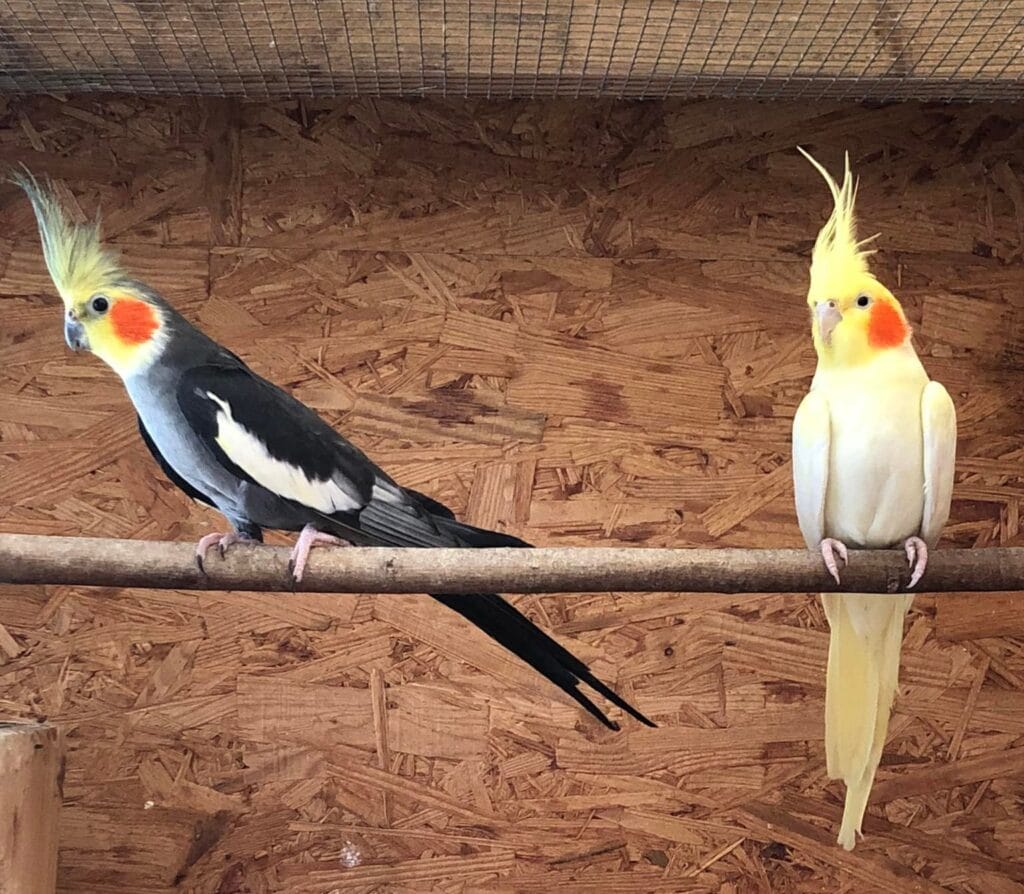
Distinctive Crest and Facial Features
Cockatiels captivate with their prominent head crests and distinctive orange cheek patches set against gray plumage. Their expressive crests communicate various emotions, from excitement to contentment, making them easily readable companions for those keeping a cockatiel as their parakeet as pet.
These medium-sized birds possess gentle expressions and graceful movements that contribute to their enduring popularity among bird enthusiasts. Their distinctive whistling calls add musical elements to households.
Gentle Nature and Family Compatibility
Cockatiels exhibit exceptionally gentle temperaments that make them ideal for families with children. Their patient nature and tolerance for handling create positive experiences for those new to keeping a parakeet as pet.
Their social needs are moderate compared to some species, making them manageable for busy households while still requiring daily interaction and attention. Many families find cockatiels to be the perfect balance of companionship and independence.
Unique Behaviors and Communication
Cockatiels communicate through various whistles, chirps, and learned melodies rather than complex speech patterns. Their musical abilities often include mimicking household sounds and simple tunes, creating charming interactions with their human families.
Their head-bobbing, crest movements, and dancing behaviors provide entertainment and insight into their emotional states. Understanding these behaviors enhances the bond between owners and their cockatiel as a parakeet as pet.
6-The Magnificent Eastern Rosella: A Rainbow of Colors
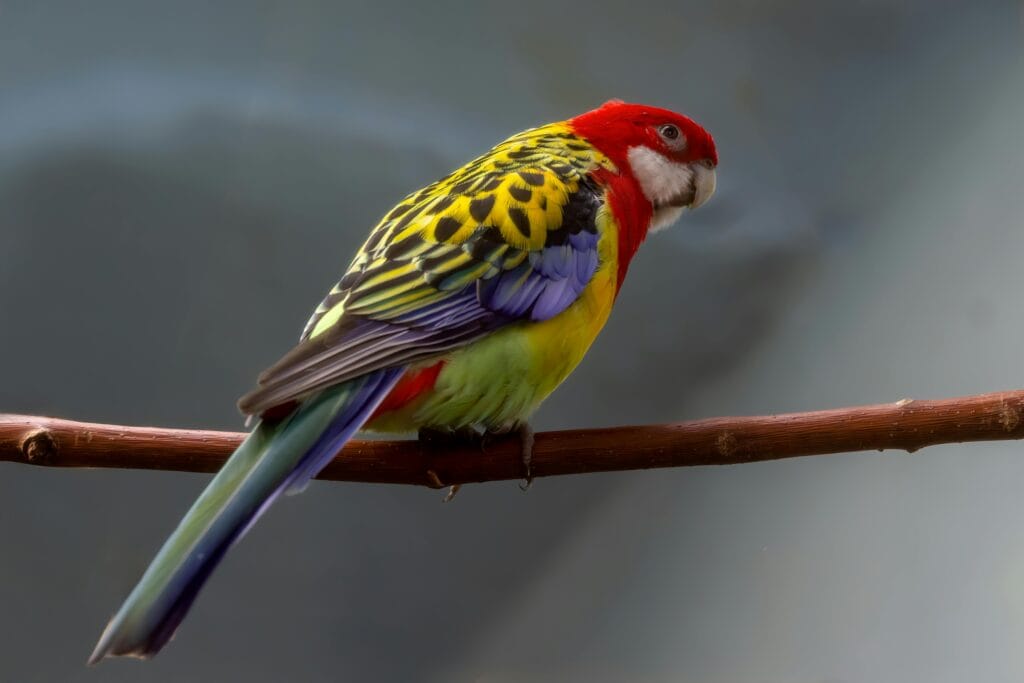
Spectacular Plumage and Color Patterns
Eastern rosellas are among the most visually stunning parakeets, featuring brilliant red heads and white cheek patches contrasted against vibrant yellow breasts and multicolored wing patches of blue, green, and black. Their rainbow-like appearance makes them exceptionally attractive choices for those seeking a visually striking eastern rosella as their parakeet as pet.
Their medium size and elegant proportions complement their stunning coloration, creating birds that are both beautiful and substantial. The intensity of their colors develops fully as they mature, with young birds showing more subdued tones that become increasingly vibrant with age.
Intelligent Nature and Behavioral Traits
Eastern rosellas demonstrate remarkable intelligence and curiosity that make them engaging companions for dedicated owners. Their problem-solving abilities and exploratory behaviors require consistent mental stimulation and environmental enrichment when kept as a parakeet as pet.
These birds exhibit confident, sometimes bold personalities that reflect their adaptability in various environments. Their natural curiosity drives them to investigate new objects and situations, making them entertaining and interactive companions.
Social Dynamics and Bonding Potential
Eastern rosellas can form strong bonds with their human families when properly socialized from a young age. Their independent nature means they don’t require constant attention, making them suitable for owners who appreciate a more self-sufficient parakeet as pet.
However, they do benefit from regular interaction and social engagement to maintain their friendly disposition. Understanding their balance between independence and social needs helps owners develop appropriate relationships with their eastern rosella companions.
7-The Stunning Red-Rumped Parakeet: Australian Elegance
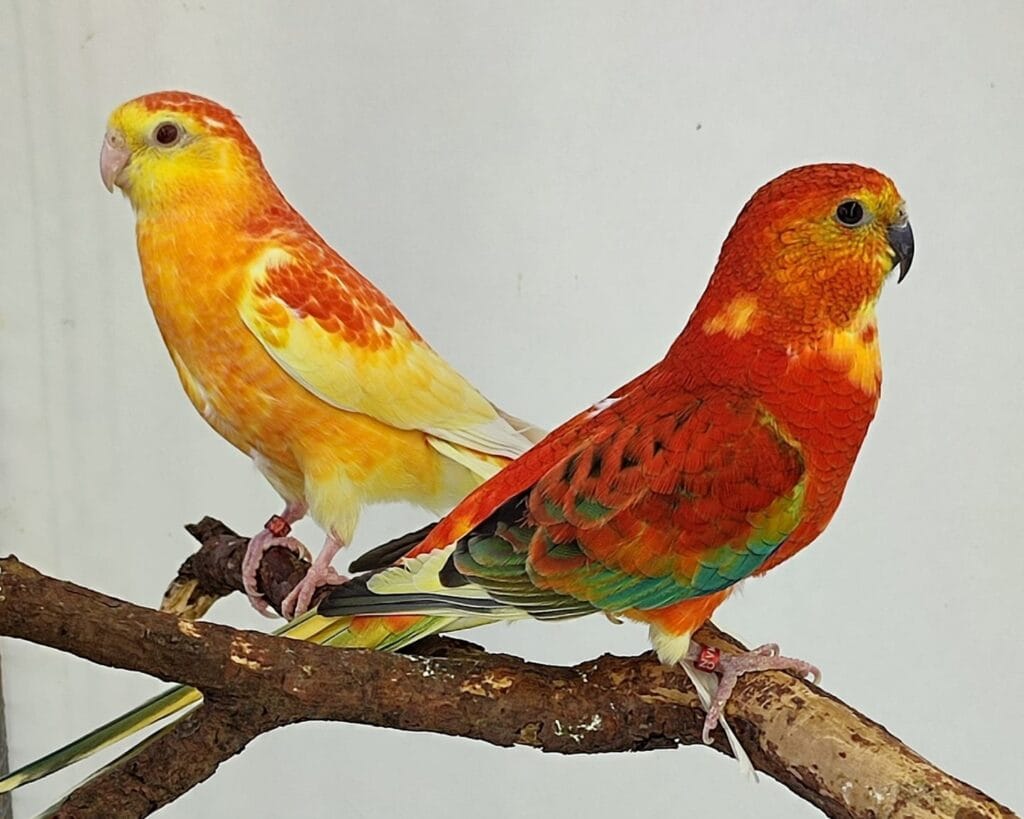
Distinctive Features and Natural Beauty
Red-rumped parakeets showcase striking sexual dimorphism, with males displaying brilliant emerald-green plumage complemented by distinctive red patches on their rumps and lower backs. Females exhibit more subdued olive-green coloration with subtle yellow-green markings, making them an visually interesting parakeet as pet choice for those who appreciate natural variations.
These medium-sized birds possess graceful proportions and fluid flight patterns that reflect their strong flying abilities in their native Australian grasslands. Their alert expressions and active demeanor demonstrate their intelligence and curiosity.
Behavioral Characteristics and Social Nature
Red-rumped parakeets exhibit gentle, social temperaments that make them excellent companions for dedicated owners. Their calm nature and tolerance for handling create positive experiences for those new to keeping a parakeet as pet, though they do require consistent socialization to maintain their friendly disposition.
Their natural flock instincts mean they often do well in pairs, though single birds can form strong bonds with their human families. Understanding their social needs helps owners provide appropriate companionship for their red-rumped parakeet as pet.
8-The Energetic Lineolated Parakeet: Small Size, Big Personality
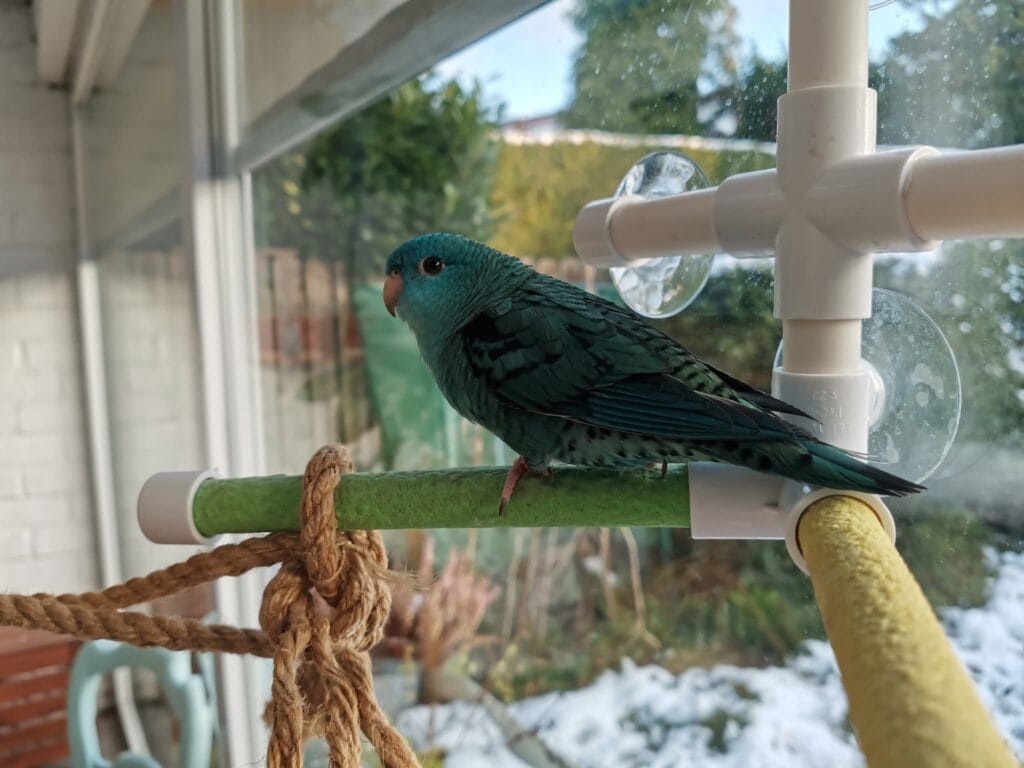
Compact Build and Unique Characteristics
Lineolated parakeets, affectionately known as “linnies,” pack substantial personality into their compact frames. Their distinctive barred plumage pattern and stocky build differentiate them from other small parakeet species, making them unique choices for those considering a lineolated parakeet as pet.
These diminutive birds possess surprisingly strong grips and climbing abilities, often preferring to walk rather than fly when moving around their enclosures. Their unusual locomotion patterns add character to their personalities.
Social Behavior and Flock Dynamics
Lineolated parakeets exhibit strong flock instincts, often doing best when kept in pairs or small groups. Their social nature translates into strong bonds with their human families when kept as a single parakeet as pet, though they require significant daily interaction to meet their social needs.
Their gentle biting pressure and calm handling characteristics make them suitable for children and nervous beginners. Their tolerance for handling and grooming activities facilitates veterinary care and daily maintenance.
9-The Vibrant Green-Cheeked Conure: Playful Perfection
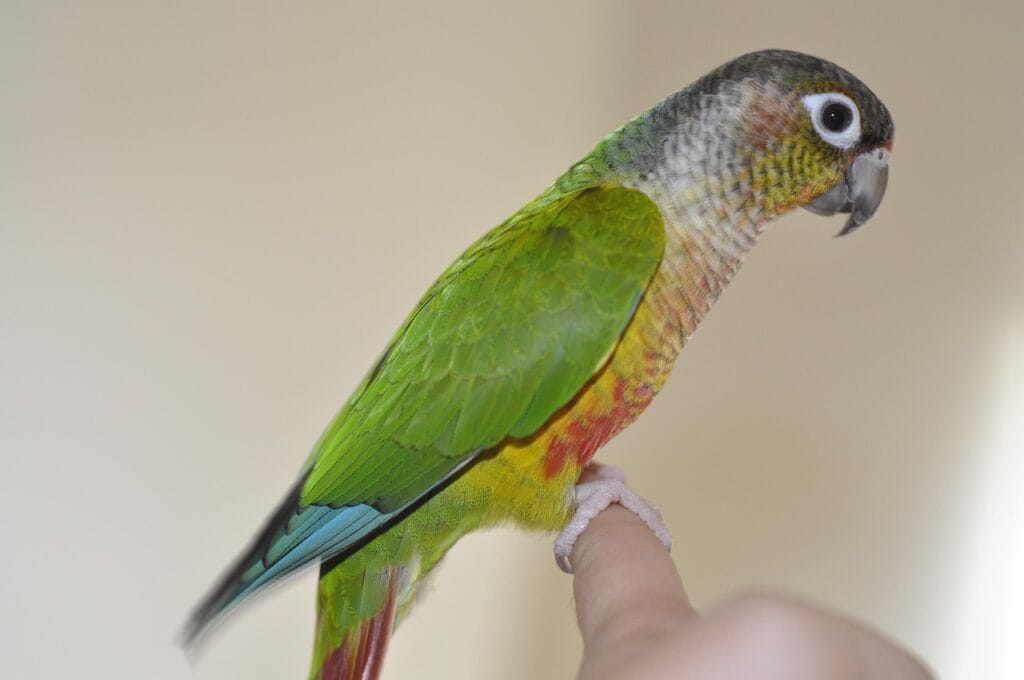
Distinctive Coloration and Physical Traits
Green-cheeked conures display beautiful combinations of green body plumage with distinctive maroon tail feathers and subtle blue flight feathers. Their bright red bellies and green cheek patches create an attractive color palette that makes them appealing choices for those considering a green-cheeked conure as their parakeet as pet.
These medium-sized birds possess sturdy builds and expressive faces that reflect their playful, mischievous personalities. Their bright, alert eyes and animated expressions provide constant entertainment for their human companions.
Playful Nature and Interactive Behavior
Green-cheeked conures are renowned for their playful, sometimes clownish behaviors that endear them to their owners. Their acrobatic abilities and curious nature create engaging interactions that make keeping a green-cheeked conure as your parakeet as pet a delightful experience.
Their intelligence and problem-solving abilities require constant mental stimulation through toys, puzzles, and interactive activities. They often enjoy learning tricks and responding to training, making them rewarding companions for dedicated owners.
Social Requirements and Bonding
Green-cheeked conures form strong bonds with their human families and thrive on social interaction. Their affectionate nature includes cuddling behaviors and seeking physical contact with their owners, creating intimate relationships that enhance the parakeet as pet experience.
However, their social needs are significant, requiring daily interaction and attention to prevent behavioral problems. Understanding their bonding requirements helps owners develop appropriate relationships with their green-cheeked conure companions.
10- The Compact Forpus: Tiny Giants of Personality
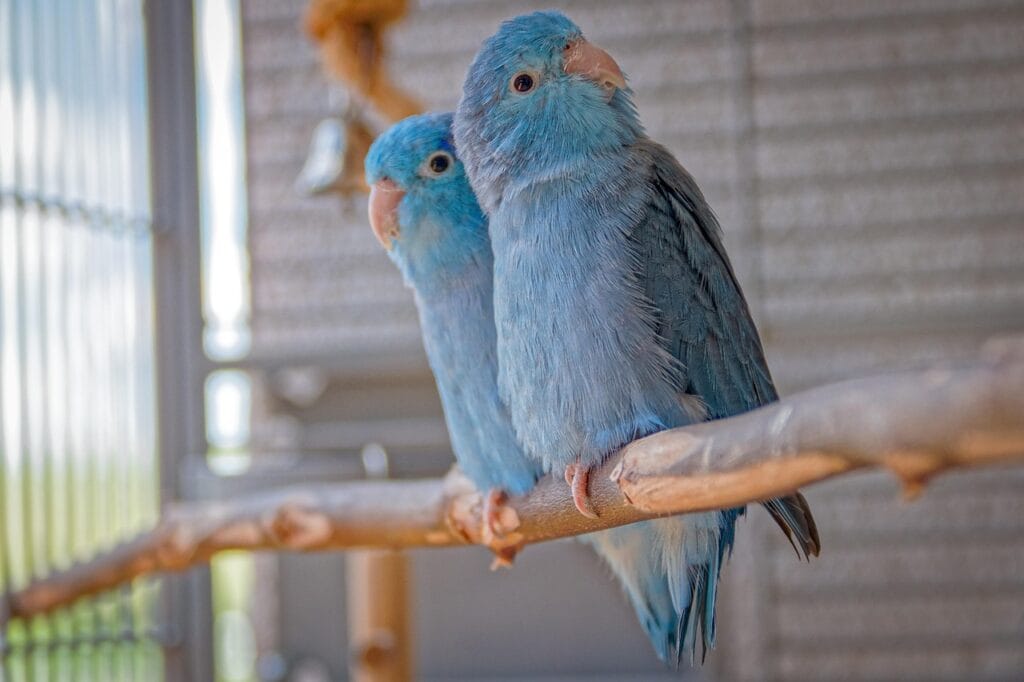
Small Stature with Big Character
Forpus parakeets, commonly known as parrotlets, are among the smallest members of the parrot family, yet they possess personalities that far exceed their diminutive size. These pocket-sized birds make excellent choices for those seeking a parakeet as pet that requires minimal space while providing maximum entertainment and companionship.
Males typically display vibrant green plumage with blue markings on their wings and rumps, while females show more uniform green coloration. Their compact build and energetic movements create an engaging presence despite their small size.
Fearless Attitude and Training Potential
Forpus parakeets exhibit remarkably fearless attitudes, often displaying confidence typically associated with much larger birds. Their intelligence and curiosity make them highly trainable, responding well to positive reinforcement techniques when kept as a parakeet as pet.
Their strong personalities require consistent boundaries and socialization from an early age. Despite their small size, they can be territorial and may challenge much larger birds, making supervision important in multi-bird households.
Care Requirements and Housing Needs
While their small size makes them suitable for apartment living, Forpus parakeets still require adequate flight space and mental stimulation. Their active nature means they need plenty of toys and environmental enrichment to prevent boredom and behavioral issues.
Their dietary needs include high-quality small pellets, fresh vegetables, and occasional healthy treats. Understanding their specific nutritional requirements helps maintain optimal health for your Forpus parakeet as pet.
11- The Exotic Peach-Faced Lovebird: Small But Mighty
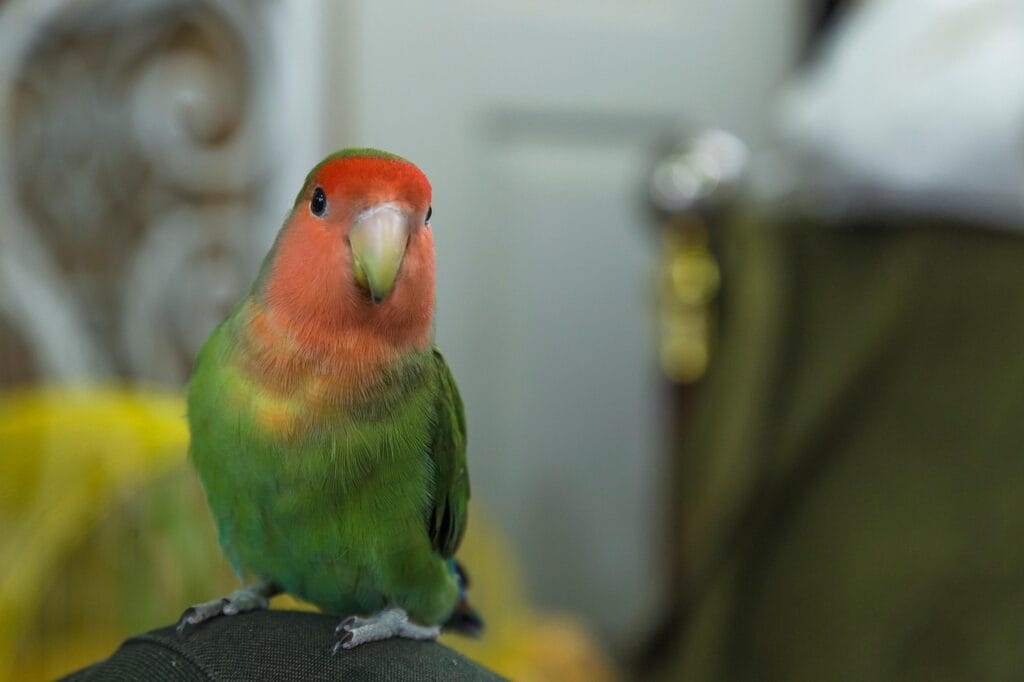
Distinctive Appearance and Color Varieties
Peach-faced lovebirds captivate with their vibrant green bodies complemented by peachy-pink faces and throats. Despite their small size, they possess substantial personalities that make them memorable choices for those considering a lovebird as their parakeet as pet.
Color mutations include dutch blue, lutino, and various pied patterns that provide aesthetic variety for prospective owners. Their compact size makes them suitable for smaller living spaces while still providing engaging companionship.
Relationship Dynamics and Pair Bonding
Lovebirds earned their name through their strong pair-bonding behaviors, though single birds can form equally strong attachments to their human companions. When kept as a single parakeet as pet, lovebirds often transfer their bonding instincts to their owners, creating intensely loyal relationships.
Their affectionate nature includes preening behaviors directed toward their human companions, demonstrating the depth of bonds they can form. Understanding their bonding needs helps owners develop appropriate relationships with their lovebird companions.
12- The Majestic Regent Parrot: Golden Splendor
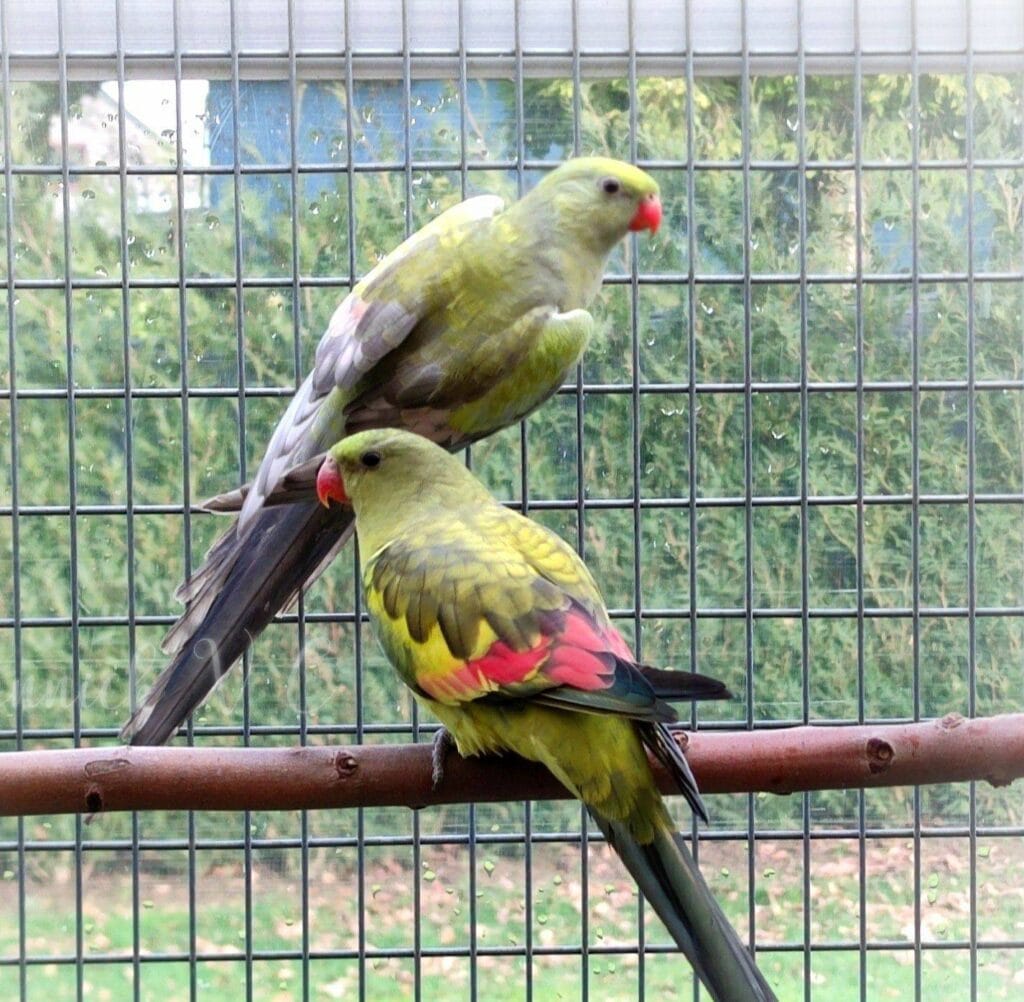
Stunning Golden Plumage and Distinctive Features
Regent parrots display breathtaking golden-yellow plumage with distinctive black wing markings and olive-green backs that create a truly regal appearance. Males exhibit more vibrant coloration with deeper golden tones, while females show slightly more subdued yellow-green hues, making them visually impressive choices for those considering a regent parrot as their parakeet as pet.
These medium-sized birds possess elegant proportions and graceful movements that reflect their dignified bearing. Their bright, intelligent eyes and alert posture demonstrate their awareness and social intelligence.
Gentle Temperament and Social Characteristics
Regent parrots exhibit notably calm and gentle temperaments that make them excellent companions for patient owners. Their peaceful nature and tolerance for handling create positive experiences for those seeking a more tranquil parakeet as pet, though they still require regular social interaction and mental stimulation.
Their natural flock instincts mean they often appreciate companionship, whether from other birds or dedicated human attention. Understanding their social preferences helps owners provide appropriate care for their regent parrot as pet.
Specialized Care and Environmental Needs
Regent parrots require spacious accommodations due to their size and active nature. Their dietary needs include high-quality pellets, fresh fruits, vegetables, and occasional nuts, reflecting their varied natural diet in Australian eucalyptus woodlands.
Their specialized requirements and somewhat sensitive nature make them better suited for owners with some bird-keeping experience, though dedicated beginners can successfully care for a regent parrot as pet with proper preparation and commitment to learning their specific needs.
Choosing Your Perfect Parakeet as Pet: Essential Considerations
Assessing Your Lifestyle and Commitment Level
Selecting the right parakeet as pet requires honest assessment of your available time, living situation, and long-term commitment capabilities. Different species have varying social needs, noise levels, and care requirements that must align with your lifestyle.
Consider factors such as apartment living restrictions, work schedules, family dynamics, and future life changes when choosing your parakeet as pet. The decision should reflect a 10-20 year commitment to providing consistent, quality care.
Space Requirements and Housing Considerations
Each parakeet species has specific space requirements that affect their physical and mental well-being. Larger species need more flight space, while highly active species require additional room for exercise and play, regardless of their size.
Understanding these spatial needs helps ensure your chosen parakeet as pet can express natural behaviors and maintain optimal health throughout their lives.
Budget Planning for Long-Term Care
The initial cost of acquiring a parakeet as pet represents only a fraction of the total ownership expense. Ongoing costs include quality food, veterinary care, toy replacement, and potential emergency medical treatment.
Planning for these expenses ensures you can provide consistent, high-quality care throughout your parakeet’s lifetime, maintaining their health and happiness as your companion.
Setting Up Your Home for Your New Parakeet as Pet
Essential Equipment and Supplies
Proper preparation involves acquiring appropriate caging, perches, toys, feeding equipment, and grooming supplies before bringing your parakeet as pet home. Quality equipment contributes significantly to your bird’s long-term health and happiness.
Research species-specific requirements to ensure your setup meets your chosen parakeet’s needs. Consulting with experienced bird owners or veterinarians can provide valuable insights into optimal equipment selection.
Creating a Safe and Enriching Environment
Safety considerations include removing toxic plants, securing windows and doors, and eliminating potential hazards such as ceiling fans, hot surfaces, and small objects that could be ingested.
Environmental enrichment through varied perches, rotating toys, and interactive feeding systems helps maintain your parakeet as pet’s mental and physical health while preventing behavioral problems.
Establishing Routines and Schedules
Parakeets thrive on predictable routines that provide security and structure to their daily lives. Establishing consistent feeding times, play periods, and sleep schedules helps your parakeet as pet adjust to their new home more quickly.
Regular routines also facilitate monitoring your bird’s health and behavior, making it easier to identify any changes that might indicate health concerns or stress.
Nutrition and Feeding Your Parakeet as Pet
Species-Specific Dietary Requirements
Different parakeet species have evolved to consume varied diets in their natural habitats, resulting in specific nutritional needs in captivity. Understanding these requirements ensures your parakeet as pet receives optimal nutrition for long-term health.
Base diets should consist of high-quality pellets supplemented with appropriate fresh foods, while avoiding potentially toxic items such as chocolate, avocado, and certain fruits with high sugar content.
Fresh Foods and Supplementation
Incorporating fresh vegetables, safe fruits, and occasional healthy treats provides nutritional variety and mental stimulation for your parakeet as pet. Rotation of food options prevents boredom and ensures broad nutritional coverage.
Monitoring your bird’s response to new foods helps identify preferences while ensuring they maintain healthy eating habits. Some species may require specific supplements based on their unique nutritional needs.
Feeding Schedules and Portion Control
Establishing regular feeding schedules helps maintain your parakeet as pet’s health while allowing you to monitor their appetite and eating habits. Portion control prevents obesity and related health issues common in captive birds.
Understanding your species’ natural feeding patterns can guide scheduling decisions, with some species preferring multiple small meals while others do well with larger, less frequent feedings.
Health Care and Veterinary Considerations
Finding an Avian Veterinarian
Establishing a relationship with a qualified avian veterinarian before bringing your parakeet as pet home ensures access to specialized care when needed. Not all veterinarians have extensive bird experience, making it important to locate appropriate expertise.
Regular check-ups help prevent health problems and establish baseline health parameters for your individual bird. Early detection of health issues significantly improves treatment outcomes.
Recognizing Signs of Illness
Parakeets instinctively hide signs of illness, making it crucial for owners to recognize subtle changes in behavior, appetite, or appearance. Daily observation of your parakeet as pet helps identify potential health concerns early.
Common warning signs include changes in eating habits, decreased activity levels, altered breathing patterns, or changes in droppings. Understanding normal behavior patterns for your species helps identify deviations that warrant veterinary attention.
Preventive Care and Wellness
Preventive care includes maintaining clean environments, providing proper nutrition, ensuring adequate exercise, and minimizing stress factors in your parakeet as pet’s daily life.
Regular cage cleaning, fresh food and water, and environmental enrichment contribute significantly to disease prevention and overall wellness. Understanding species-specific health risks helps target preventive efforts effectively.
Training and Socialization for Your Parakeet as Pet
Building Trust and Bonding
Developing a strong relationship with your parakeet as pet requires patience, consistency, and understanding of their natural behaviors and communication methods. Trust-building forms the foundation for all future training and interaction.
Respecting your bird’s comfort zones while gradually expanding their boundaries helps build confidence and strengthens your bond. Each species may have different socialization timelines and preferences.
Basic Training Techniques
Positive reinforcement training methods work effectively with most parakeet species, using favored foods or activities as rewards for desired behaviors. Consistency in training approaches helps your parakeet as pet understand expectations.
Basic behaviors such as step-up commands, recall training, and handling tolerance make daily care easier while providing mental stimulation. Training sessions should be brief but frequent to maintain engagement.
Addressing Behavioral Challenges
Understanding natural parakeet behaviors helps distinguish between normal activities and problematic behaviors that require intervention. Many perceived problems stem from unmet physical or psychological needs.
Common behavioral challenges include excessive vocalizations, aggression, or destructive behaviors that often respond well to environmental modifications and consistent training approaches tailored to your parakeet as pet’s specific needs.
FAQ
What is the best parakeet as pet for a complete beginner?
Budgerigars are widely considered the best choice for beginners due to their gentle nature, manageable size, straightforward care requirements, and forgiving temperament while learning proper bird care techniques.
How much time do I need to spend with my parakeet as pet daily?
Most parakeet species require at least 2-4 hours of social interaction daily, though this can include time spent in the same room talking to your bird, not necessarily direct handling throughout the entire period.
Can I keep just one parakeet as pet, or do they need companions?
While many parakeet species are social and benefit from companions, single birds can thrive with adequate human interaction and attention. The decision depends on the species, your available time, and your bird’s individual personality.
What are the ongoing costs of keeping a parakeet as pet?
Monthly costs typically range from $20-50 for food, toys, and supplies, with annual veterinary check-ups costing $75-150. Emergency veterinary care and cage replacement represent additional periodic expenses to budget for long-term ownership.
Did you enjoy this article?
Help other pet lovers benefit too — Share it on social media! 🐾💚

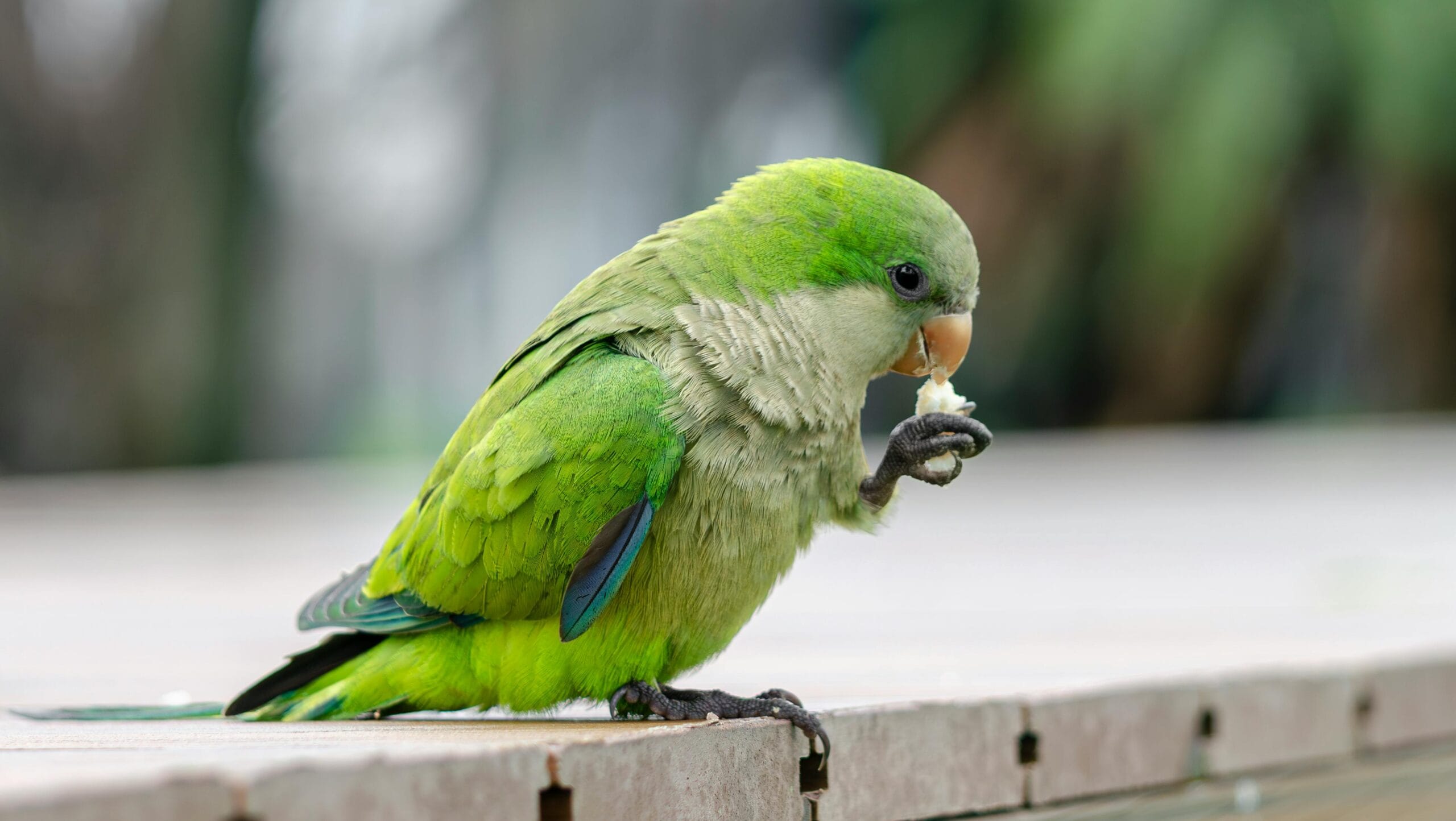
Leave a Reply